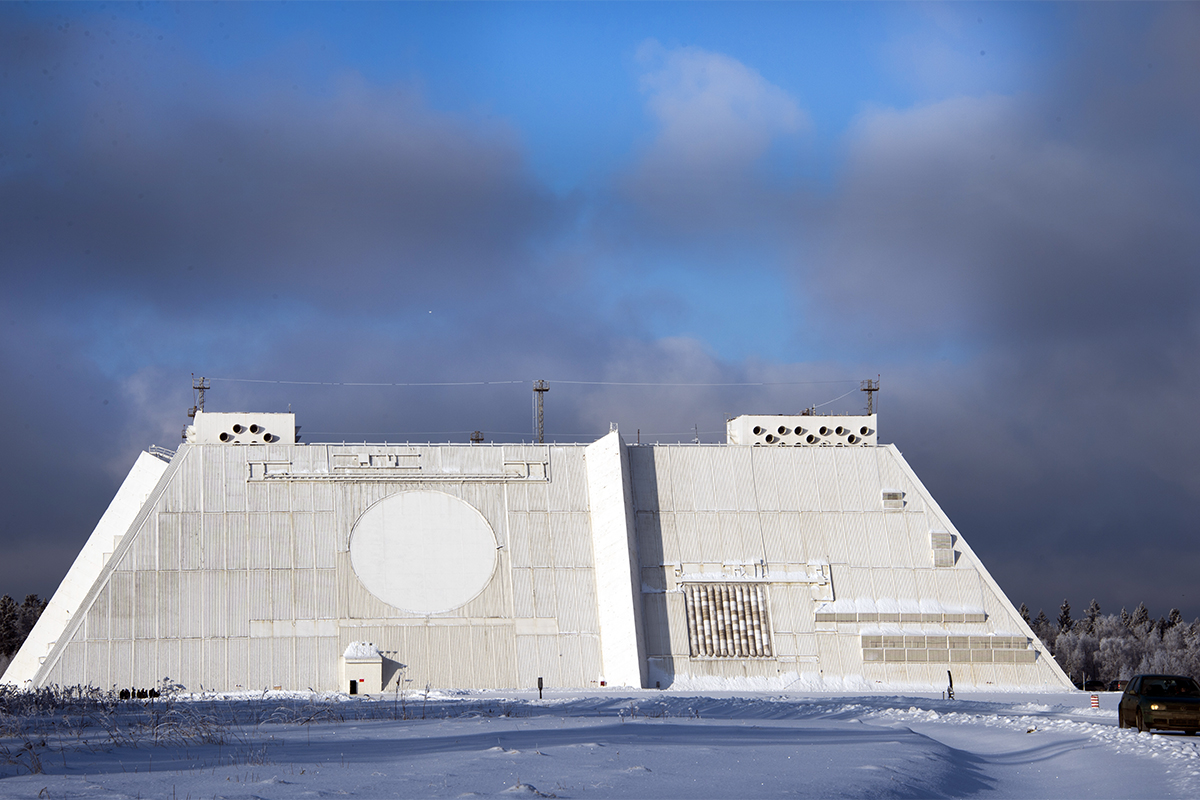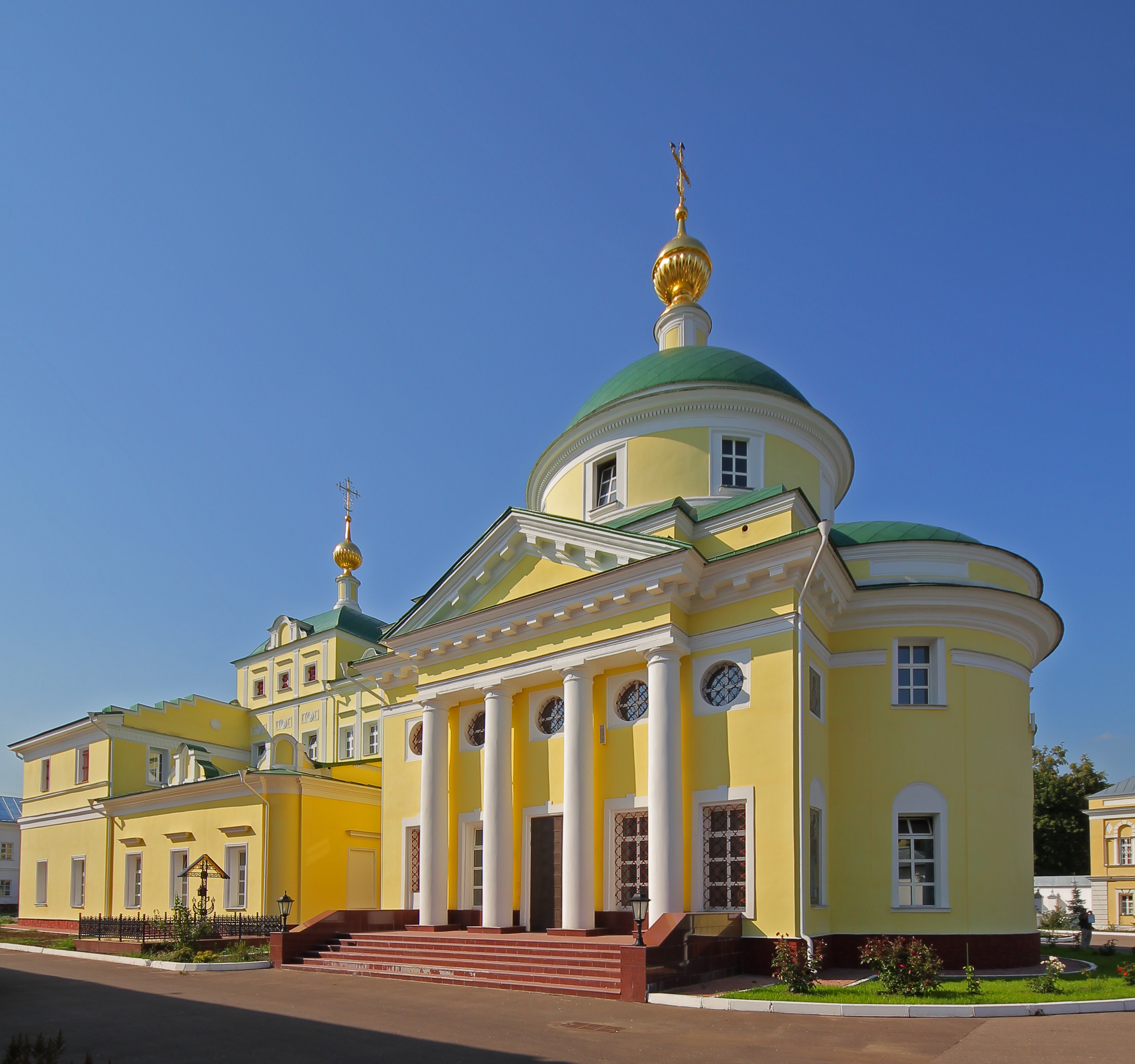|
1st Special Purpose Air And Missile Defense Army
The 1st Order of Lenin Special Purpose Air and Missile Defences Forces Army (Russian: 1-čÅ ąŠčĆą┤ąĄąĮą░ ąøąĄąĮąĖąĮą░ ą░čĆą╝ąĖčÅ ą┐čĆąŠčéąĖą▓ąŠą▓ąŠąĘą┤čāčłąĮąŠą╣ ąĖ ą┐čĆąŠčéąĖą▓ąŠčĆą░ą║ąĄčéąĮąŠą╣ ąŠą▒ąŠčĆąŠąĮčŗ ąŠčüąŠą▒ąŠą│ąŠ ąĮą░ąĘąĮą░č湥ąĮąĖčÅ) is a military formation of the Russian Air and Missile Defense Forces (Russian Aerospace Defence Forces) tasked with defending assets of high strategic value in Russia, primarily the Moscow region and its surroundings where much of the military leadership is located together with a large part of the Russian population centers. The unit is the only one equipped with the A-135 anti-ballistic missile system, A-135M Anti-ballistic missile, anti-ballistic missile system. It traces its history through the Moscow Air Defence District and the Special Purpose Command. The Moscow Air Defence District was awarded the Order of Lenin on 22 June 1968. Moscow Defence Brief wrote regarding the reorganisation of 2011: "The Air Defense and Missile Defense ... [...More Info...] [...Related Items...] OR: [Wikipedia] [Google] [Baidu] |
Air And Missile Defense Forces
The Air and Missile Defense Forces (, ąÆąŠą╣čüą║ą░ ą¤ąÆą×-ą¤ąĀą× or ''Voiska PVO-PRO'') is one of three branches of the Russian Aerospace Forces. The branch was formed in 2015 during the creation of the Russian Aerospace Forces as the branch responsible for all strategic land-based air defense. The Air Defense Forces (PVO) were a separate branch of the Russian Armed Forces from 1992 until 1998, when it was merged into the Russian Air Force. In 2010 the four corps and seven divisions of the PVO within the Air Force were reorganized into 11 anti-air defense brigades. The primary combat formation of the branch is the 1st Special Purpose Air and Missile Defense Army. It includes nine surface-to-air missile regiments, with four equipped with the S-300 system and five with the S-400 and Pantsir systems. Structure Structure of the branch as of 2023: * 1st Special Purpose Air and Missile Defense Army * Zhukov Air and Space Defence Academy * Yaroslavl Higher Military School of Anti-A ... [...More Info...] [...Related Items...] OR: [Wikipedia] [Google] [Baidu] |
Drone Strikes
Drone warfare is a form of warfare using military drones or military robots. The robots may be remote controlled or have varying levels of autonomy during their mission. Types of robots include unmanned combat aerial vehicles (UCAV) or weaponized commercial unmanned aerial vehicles (UAV), unmanned surface vehicles (USV) or unmanned underwater vehicles (UUV), and unmanned ground vehicles (UGV). The United States, the United Kingdom, Israel, China, South Korea, Iran, Iraq, Italy, France, India, Pakistan, Russia, Turkey, Ukraine, and Poland are known to have manufactured operational UCAVs as of 2019. Drones are commonly used for intelligence, surveillance, target acquisition, and reconnaissance and to conduct direct attacks on target, however they may also be utilized for electronic warfare, explosive ordnance disposal, augmenting battlefield logistics or target training. Aerial drone attacks can be conducted via purpose-built UCAVs deploying ordnance during a drone strike or ... [...More Info...] [...Related Items...] OR: [Wikipedia] [Google] [Baidu] |
Leonid Tishkevichi
Leonid ( ; ; ) is a Slavic version of the given name Leonidas. The French version is Leonide. People with the name include: * Leonid Agutin (born 1968), Russian pop musician and songwriter *Leonid Andreyev (1871ŌĆō1919), Russian playwright and short-story writer who led the Expressionist movement in the national literature *Leonid Brezhnev (1906ŌĆō1982), leader of the USSR from 1964 to 1982 *Leonid Buryak (b. 1953), USSR/Ukraine-born Olympic-medal-winning soccer player and coach *Leonid Bykov (1928ŌĆō1979), Soviet and Ukrainian actor, film director, and script writer * Leonid Desyatnikov (b. 1955), Soviet and Russian opera and film composer *Leonid Feodorov (1879ŌĆō1935), a bishop and Exarch for the Russian Catholic Church, and survivor of the Gulag *Leonid Filatov (1946ŌĆō2003), Soviet and Russian actor, director, poet, and pamphleteer *Leonid Gaidai, (1923ŌĆō1993), Soviet comedy film director * Leonid Geishtor (b. 1936), USSR (Belarus)-born Olympic champion Canadian pairs spr ... [...More Info...] [...Related Items...] OR: [Wikipedia] [Google] [Baidu] |
Don-2N Radar
The Don-2N radar (, NATO: Pill Box) is a large missile defense and early warning active electronically scanned array radar outside Moscow, and a key part of the Russian A-135 anti-ballistic missile system designed for the defense of the capital against ballistic missiles. Located near Sofrino in Pushkinsky District of Moscow Oblast, it is a quadrangular frustum tall with sides long at the bottom, and long at the top. Each of its four faces has an diameter Super high frequency band radar giving 360 degree coverage. To the right of each circular search and track array, separated by a vertical structure for shielding, is a square antenna array (edge length 10 m) for guiding the interceptor missile by data link. The system is run by an Elbrus-2 () supercomputer. It has a range of 3,700 km for targets the size of a typical ICBM warhead. Under the 1972 Anti-Ballistic Missile Treaty both the United States and the Soviet Union had to designate one area to protect from missil ... [...More Info...] [...Related Items...] OR: [Wikipedia] [Google] [Baidu] |
Sofrino
Sofrino () is an urban locality (an urban-type settlement) in Pushkinsky District of Moscow Oblast, Russia Russia, or the Russian Federation, is a country spanning Eastern Europe and North Asia. It is the list of countries and dependencies by area, largest country in the world, and extends across Time in Russia, eleven time zones, sharing Borders .... Population: It is a production center, where a Russian factory for the production of religious household items, from icons and temple decorations to priests' clothing, and the largest glycerin production enterprise in Europe are located. References Urban-type settlements in Moscow Oblast {{MoscowOblast-geo-stub ... [...More Info...] [...Related Items...] OR: [Wikipedia] [Google] [Baidu] |
Leninsky District, Moscow Oblast
Leninsky District () is an administrativeLaw #11/2013-OZ and municipalLaw #79/2005-OZ district (raion), one of the thirty-six in Moscow Oblast, Russia. It is located in the center of the oblast just south of the federal city of Moscow. The area of the district is . Its administrative center is the town of Vidnoye. Population: 145,251 ( 2002 Census); The population of Vidnoye accounts for 33.0% of the district's total population. History A major part of Leninsky District was merged into the federal city of Moscow on July 1, 2012.Official website of the Government of MoscowDraft of adopted measures of the capital and oblast governments with regards to the expansion of the borders of Moscow Culture * St. Catherine's monastery * Soviet Square and Leninskiy District Historical and Cultural Center ( Vidnoye) Notable residents * Vasily Molokov (1895ŌĆō1982), Soviet pilot, a Hero of the Soviet Union, born in Irininskoye village ŌĆō┬Ānow called Molokovo *Oleg Vidov Oleg ... [...More Info...] [...Related Items...] OR: [Wikipedia] [Google] [Baidu] |
Dolgoprudny
Dolgoprudny (, ) is a town in Moscow Oblast, Russia, located about north of Moscow city center. The town's name is derived from Russian "" (''dolgy prud'', lit. "long pond")ŌĆöa long and narrow pond situated in the northeastern part of the town. The town's name is sometimes colloquially shortened as ''Dolgopa''. Population: Geography The territory of the town borders with Moscow in the south and in the east, Khimki in the southwest, and is limited by the Moscow Canal in the west and by the Klyazminskoye Reservoir in the north. The town can be reached by suburban train from the Savyolovsky Terminal of Moscow in about twenty minutes to one of the three platforms: Novodachnaya, Dolgoprudnaya, or Vodniki, or by bus shuttle from Khovrino and Altufyevo stations of the Moscow Metro. The Dmitrovskoye highway connecting Moscow with Dmitrov and Dubna passes just east of the town. History A settlement of Vinogradovo situated in the place of the modern town was known at least si ... [...More Info...] [...Related Items...] OR: [Wikipedia] [Google] [Baidu] |
Pantsir Missile System
The Pantsir () missile system is a family of self-propelled, medium-range surface-to-air missile and anti-aircraft artillery systems. Three types of vehicles make up one system: a missile launcher, a radar truck and a command post. Starting with the Pantsir-S1 (, NATO reporting name SA-22 Greyhound) as the first version, it is produced by KBP Instrument Design Bureau of Tula, Russia, and is the successor to the Tunguska M1. The Pantsir-S1 was designed to provide point air defence of military, industrial and administrative installations against aircraft, helicopters, precision munitions, cruise missiles and UAVs; and to provide additional protection to air defence units against enemy air attacks employing precision munitions, especially at low to extremely low altitudes. Design The first finished version was completed in 1995 with the 1L36 radar, later another was designed. It is a short to medium range ground-based air defence system, wheeled, tracked or stationary with two t ... [...More Info...] [...Related Items...] OR: [Wikipedia] [Google] [Baidu] |
S-300 Missile System
The S-300 (NATO reporting name SA-10 Grumble) is a series of long-range surface-to-air missile systems developed by the former Soviet Union. It was produced by NPO Almaz for the Soviet Air Defence Forces to defend against air raids and cruise missiles. It is used by Russia, Ukraine, and other former Eastern Bloc countries, along with Bulgaria and Greece. It is also used by China, Iran, and other countries in Asia. The system is fully automated, though manual observation and operation are also possible. Each targeting radar provides target designation for the central command post. The command post compares the data received from the targeting radars and filters out false targets. The central command post has both active and passive target detection modes. Missiles have a maximum range of from the command post. The successor to the S-300 is the S-400 (NATO reporting name ''SA-21 Growler''), which entered service on 28 April 2007. Variations and upgrades There are current ... [...More Info...] [...Related Items...] OR: [Wikipedia] [Google] [Baidu] |




